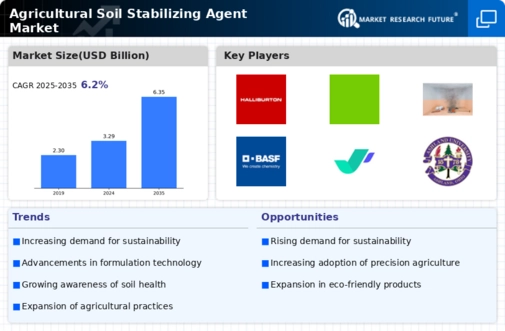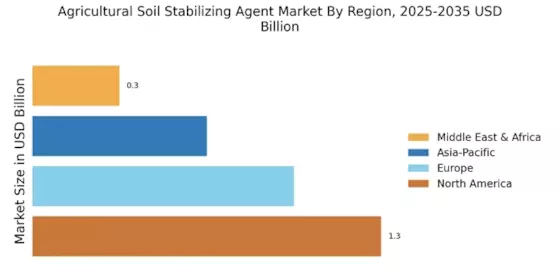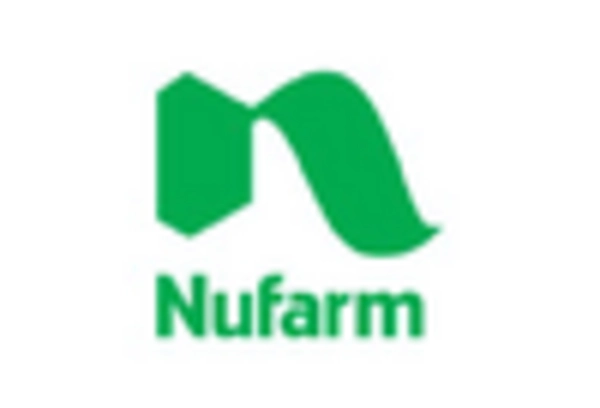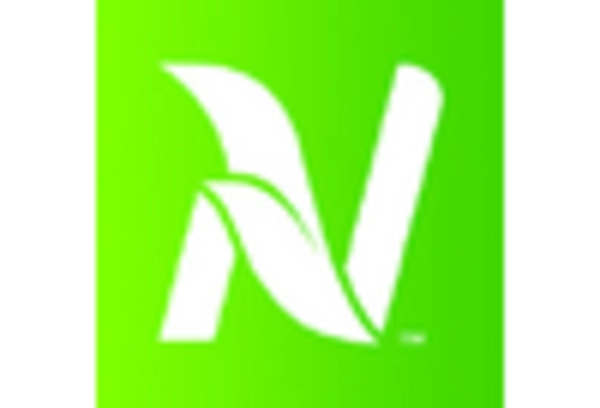Technological Innovations
Technological advancements in the formulation and application of soil stabilizing agents are significantly impacting the Agricultural Soil Stabilizing Agent Market. Innovations such as bio-based stabilizers and smart application techniques are emerging, enhancing the effectiveness of these agents. The integration of technology in agriculture, including the use of drones and precision application methods, is likely to optimize the use of soil stabilizing agents. This trend is supported by data indicating that the adoption of advanced technologies in agriculture could lead to a 20% increase in efficiency in soil management practices. As a result, the market for these agents is expected to expand as farmers seek to leverage technology for improved soil stability.
Sustainability Initiatives
The increasing emphasis on sustainable agricultural practices appears to be a primary driver for the Agricultural Soil Stabilizing Agent Market. Farmers and agricultural stakeholders are increasingly adopting soil stabilizing agents to enhance soil health and reduce erosion. This shift is likely influenced by regulatory frameworks promoting environmentally friendly practices. According to recent data, the market for soil stabilizing agents is projected to grow at a compound annual growth rate of approximately 6% over the next five years. This growth is indicative of a broader trend towards sustainability in agriculture, where soil stabilizing agents play a crucial role in maintaining soil integrity and productivity.
Government Support and Policies
Government initiatives and policies aimed at promoting sustainable agriculture are likely to bolster the Agricultural Soil Stabilizing Agent Market. Various governments are implementing programs that encourage the use of soil stabilizing agents through subsidies and educational campaigns. These policies are designed to mitigate soil degradation and promote practices that enhance soil health. For instance, funding for research and development in soil management technologies is increasing, which may lead to innovative solutions in soil stabilization. As a result, the market for soil stabilizing agents is expected to benefit from enhanced governmental support, fostering a conducive environment for growth.
Rising Demand for Food Security
The growing The Agricultural Soil Stabilizing Agent Industry. As agricultural land becomes increasingly stressed due to intensive farming practices, the need for effective soil management solutions is paramount. Soil stabilizing agents help improve soil structure, enhance water retention, and increase crop yields, which are essential for meeting food production targets. Recent statistics suggest that the agricultural sector must increase food production by 70% by 2050 to meet global demands. This urgent need for enhanced agricultural productivity is likely to propel the demand for soil stabilizing agents, positioning them as vital components in sustainable farming.
Increased Awareness of Soil Health
There is a growing awareness among farmers and agricultural professionals regarding the importance of soil health, which is driving the Agricultural Soil Stabilizing Agent Market. Educational initiatives and outreach programs are emphasizing the role of soil stabilizing agents in maintaining soil quality and fertility. This heightened awareness is likely to lead to increased adoption of these agents as farmers recognize their benefits in preventing soil erosion and enhancing crop productivity. Market data indicates that regions with active soil health campaigns are witnessing a 15% rise in the use of soil stabilizing agents. This trend suggests that as awareness continues to grow, the market for these agents will expand correspondingly.


















Leave a Comment